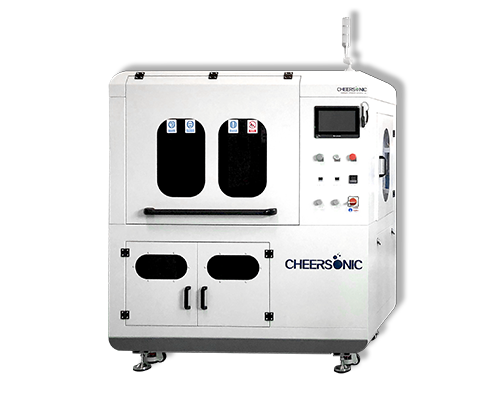Anti-reflection Graphene Coating On Metal Surface
Anti-reflection Graphene Coating On Metal Surface – Graphene Coating – Cheersonic
Electrochemical anisotropic etching, along with prior cathodic polarization during anodic etching, is used to form homogeneous antireflective (AR) structures on metal surfaces. Further electrophoretic deposition forms graphene oxide (GO) nanostructures. The graphene-based AR coating is achieved by electrochemical reduction of GO. Optical metal surfaces with high efficiency of light absorption and low reflectivity are obtained. Our results demonstrate the potential use of graphene in anti-reflection coating.
Graphical abstract
Electrochemical anisotropic etching, along with prior cathodic polarization during anodic etching, is used to form homogeneous antireflective structures on metal surfaces with an ultralow spectral reflectivity of 0.002%.
Introduction
Coating can be traced back to 4700 BC or even earlier for the purpose of anticorrosion and beautification. Recently, coatings with graphene have attracted great attention, which include lubricant coating, separation membranes, waterproofing coating, absorptive coating, and coated electrodes for lithium batteries. Antireflective (AR) coating can be used to control the reflection index (RI) of material surfaces, which has a wide range of applications in optical systems. Compared with traditional optical absorption materials, single layer graphene absorbs approximately 2.3% of white light with much lower mass density, making it a potential candidate for blackbody in mass-sensitive systems. However, the use of graphene as AR coating has not been well studied.
In optical systems, AR coating is applied to the material surface to reduce the reflection of electromagnetic waves in a broad sense. According to the absorption and transmission ratios in different segments of electromagnetic waves, AR coating is applied to optical lens, planetary astronomy instruments, solar power systems, and other optical systems. Carbon is being intensely studied for optical coating, such as the absorbing materials prepared by carbon nanowalls or carbon nanotube (CNT) arrays, electromagnetic wave absorbing coating using CNT–metal composites], and AR coating of solar cells using diamond-like carbon.
The AR coating prepared with graphene has several advantages. First, monolayer graphene has a visible light absorption of 2.3%, which makes it a promising candidate for the AR coating with an effective complex optical path. Second, the low mass–density ratio is advantageous. Comparing with nickel, chromium and other traditional absorbing materials, graphene is a better candidate for use in mass-sensitive systems. Third, there is a rich resource of carbon, and the processing is environmentally friendly without significant biological toxicity. Fourth, graphene has a strong affinity to polymer and metal surfaces, making the AR process fully compatible with the existing surfaces.
Material and methods
Graphene oxide (GO) aqueous dispersion (prepared in our laboratory), aluminum alloy (manganese/iron/copper, forging, 150 × 150 × 2 mm3), and lithium perchlorate (AR) were used in this study. Electrochemical workstation (CHE660E) was used to supply the current pulses and record the transient potential changes.
As shown in Fig. 1, the experimental process was mainly consisted of two parts: electrochemical etching (corrosion) and electrophoretic deposition. First, the cleaned aluminum substrate was
Results and discussion
As shown in Fig. 2a, the morphology changes of aluminum surfaces during the treatment process are recorded in optical images. The top left sample is the bare aluminum with high reflectance-ratio. The top right sample is the modified aluminum with AR structure (AR-Al). Electrochemical anisotropic anodic etching with prior cathodic polarization was applied to achieve homogeneous AR structures on aluminum surfaces. The bottom left one is a typical sample of aluminum substrate modified with
Conclusion
In summary, the optical performance of GAC on modified aluminum in the near UV and visible light region is demonstrated. It was shown that the GAC possessed outstanding optical properties, such as high absorption and low reflectance. The reflectance of GAC at normal incidence can reach up to 0.002%. Additionally, the dependence of optical property on the structure has been revealed. The excellent anti-reflection capacity can be attributed to the micro-structural patterns, crystal imperfection.
Ultrasonic Graphene Coating Spraying Machine
The inherent properties of graphene and the ability to uniformly deposit nanomaterials by ultrasonic spraying offer many possibilities for thin film functional coatings in electronics, solar cells, advanced battery technology and even protective layers. Ultrasonic spray technology has proven to be useful for spraying graphene and graphene oxide films, and has been studied in many new technologies. Ultrasonic spraying is capable of depositing highly uniform, extremely thin nanolayers with minimal overspray.

Ultrasonic coating systems are used to deposit nano-layer coatings with uniform thickness on substrates of any width. Even over a wide width, very thin coatings with high uniformity can be produced, which makes ultrasonic spraying technology particularly suitable for many precision nanotechnology spraying applications.

